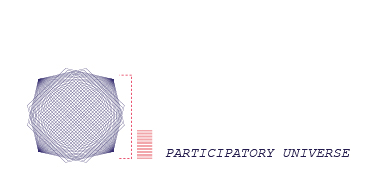


QUANTUM MECHANICS
At the microscopic level, two identical experiments did not have the same outcome. Moreover, through the two-slit light experiments it was found that particles acted like waves, similar to water or sound, and had unpredictable shapes; whereas according to classical physics, it was thought that particles would act like little pellets. Although scientists found that light is an electromagnetic wave that creates interference patterns, they were never able to measure the exact location and velocity of the particles.
Max Born had a breakthrough approach to interpret this experiment. He insisted that this wave was not a bunch of electrons vibrating, but represented probability, indication that high and low intensity of possibility of the finding to electron. The classical way of interpreting the event is to look for defined values, using defined measuring systems. Born brought the notion of ambiguity as a measuring system for the behavior of microscopic objects to deal with this counter-intuitive phenomena. The probability of finding the location of a certain electron relies on the size of the wave, which represents the probability of it being found in a location, or the state of motion of the particle; in contrast with Einstein’s idea, this means that randomness is a fundamental characteristic of the laws of nature. Einstein was not happy with this conclusion, and made the famous remark, “I can’t believe that God plays dice.” Although Einstein did not like the idea of adapting the concept of probability, it became the fundamental notion of modern physics. Later, many ground-breaking equations that changed the history of science and our perception were generated based on this notion of probability. Schrodinger’s wave function is one of these.
Schrodinger suggested new types of laws of motion with his mathematical equation that explains this phenomena and the probability value, “probability amplitude,” which is called the “wavefunction.” Since the quantum system describes any physical system, the function is able to describe all the possible states of the physical system. He thought that wavefunction could also explain superpositions, the collection of all possible different states of the subject. Put simply, Schrodinger’s equation describes the value of the evolution of the wave function that occurred over time. The value, probability amplitude, is represented in complex numbers, the squares of the absolute values of which provide information of the possibility distribution of the system in superposition. He suggests a very interesting theory that if microscopic objects are in superposition, macroscopic objects like a chair, cat and the entire universe could be also, because after all, they are made of microscopic objects.
Max Tegmark and John Archibald wheeler explains this theory with simple “Card Experiment”. “You take a card with a perfectly sharp edge and balance it on its edge on a table. According to classical physics, it will in principle stay balanced forever. According to the Schrödinger’s equation, the card will fall down in a few seconds even if you do the best possible job of balancing it, and it will fall down in both directions—to the left and the right—in superposition. If you could perform this idealized thought experiment with an actual card you would undoubtedly find that classical physics is wrong and that the card falls down. But you would always see it fall down to the left or to the right, seemingly at random, never to the left and to the right simultaneously, as the Schrödinger’s equation might have you believe” ( Tegmark and Wheeler 5p).
“So long as the balanced card is unobserved, its wave function evolves by obeying the Schrödinger equation—a continuous and smooth evolution that is called “unitary” in mathematics and has several very attractive properties. Unitary evolution produces the superposition in which the card has fallen down both to the left and to the right. The act of observing the card, however, triggers an abrupt change in its wave function, commonly called a “collapse”: the observer sees the card in one definite classical state (face up or face down), and from then onward only that part of the wave function survives. Nature supposedly selects one state at random, with the probabilities determined by the wave function” ( Tegmark and Wheeler 5p).
Simply speaking, in a certain event, the state of the subject, which is in multiple possible states, is defined by the observer, or a measuring apparatus, as a single state. Wavefunction was created by Schrodinger, but has been refined in simple usage over the years. The modern version of the equation utilizes the concept of a matrix, which acts on a vector to give another vector, which is a finite sequence of real numbers. Nature is made of quantum bits. Thus, natural phenomena can always be described by sets of matrices. Just like the Cubist approach to interpreting reality, contemporary physicists dissect and analyze the phenomena with a physical system such as matrices, a system that changes its configuration and interacts with other systems yet retains its identity over time; still, it will stay at the microscopic level because in the world of mathematics we can divide the value endlessly, but they simplify the different dimensions of reality.